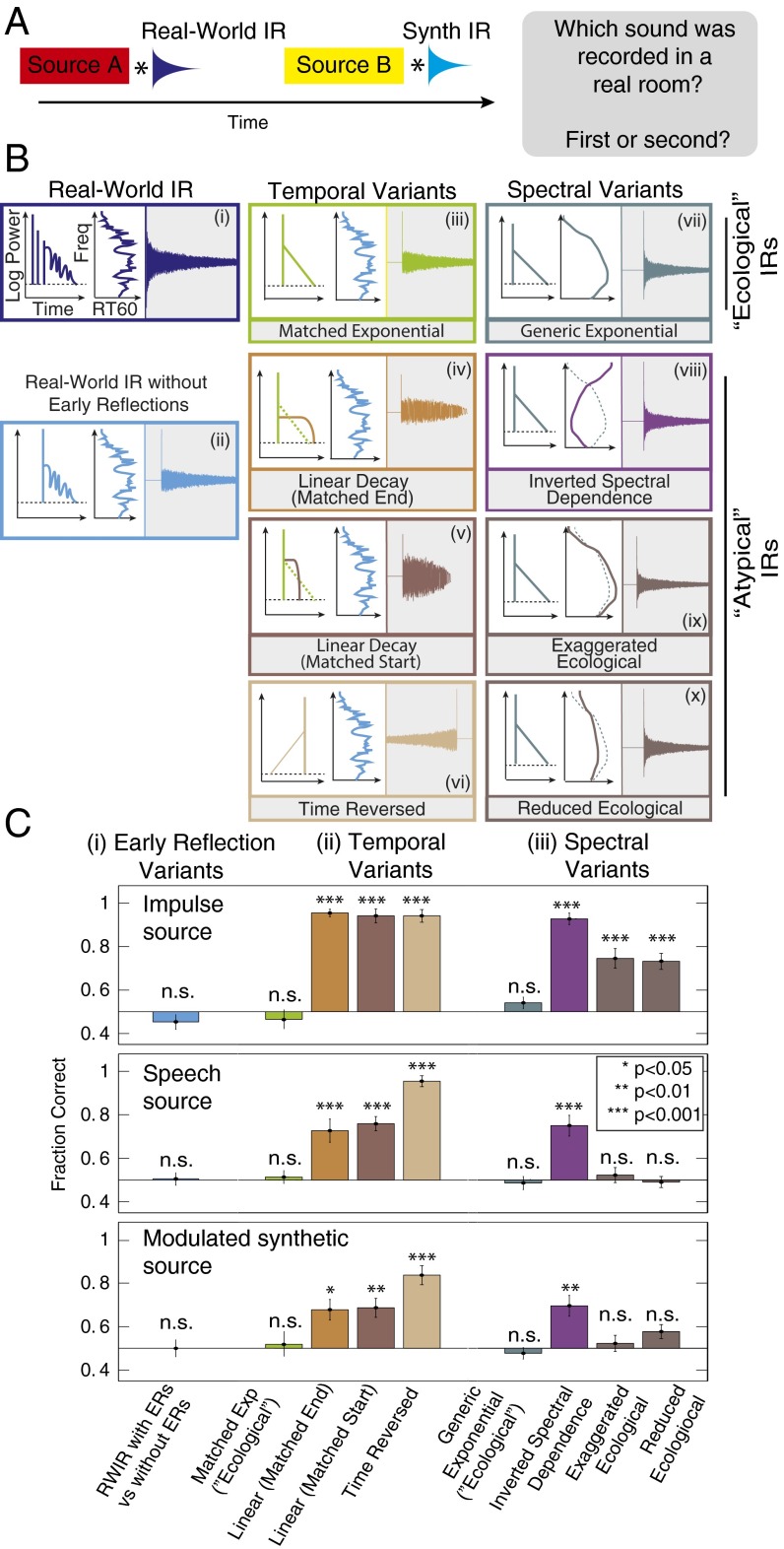Fig. 6.
Discrimination of synthetic reverberation (experiment 1). (A) Schematic of trial structure. Two sounds were played in succession, separated by a silent interval. Each sound was generated by convolving a source signal (an impulse, a spoken sentence, or a modulated noise) with an IR. The IR was a real-world IR for one sound and one of the synthetic variants for the other one (matched in RT60). Listeners judged which of the two sounds was recorded in a real room. (B) IR variants used in psychophysical experiments, varying in the presence of early reflections (i and ii), temporal dependence of decay (iii–vi), and spectral dependence of decay (vii–x). (B, i) Real-world IR; (B, ii) real-world IR with the early reflections removed; (B, iii) synthetic exponential decay with RT60 and DRR profiles matched to a real-world IR; (B, iv and v) synthetic linear decay matched to a real-world IR in starting amplitude or audible length (B, vi) time-reversed exponential decay; (B, vii) synthetic exponential decay with RT60 and DRR profiles interpolated from the real-world IR distribution; (B, viii–x) inverted, exaggerated, or reduced spectral dependence of RT60. (C) Task performance (proportion correct) as a function of the synthetic IR class for three source types: impulses (Top, yielding the IRs themselves), speech (Middle), and modulated noise (Bottom). Error bars denote SEMs. Asterisks denote significance of difference between each condition and chance performance following correction for multiple comparisons (*P < 0.05, **P < 0.01, and ***P < 0.001, two-sided t test; n.s., not significant).

